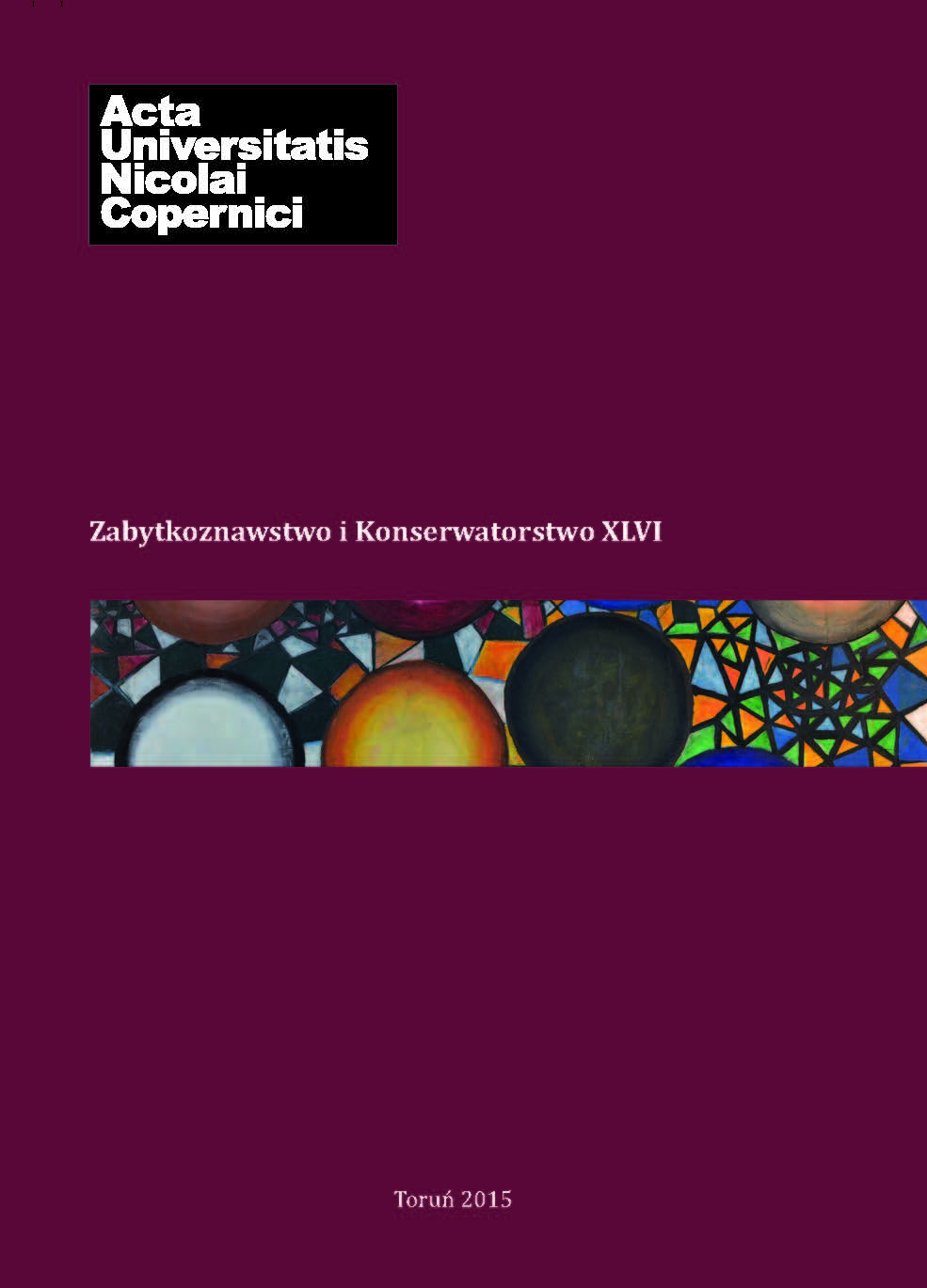W czerni. Twórczość graficzna Marii Dunin-Piotrowskiej i Zygmunta Dunina
DOI:
https://doi.org/10.12775/AUNC_ZiK.2015.007Abstrakt
This article discusses the work, graphic art and drawings, of the siblings, Maria Dunin-Piotrowska and Zygmunt Dunin created in the 1930s. The Dunins came from Kamyanets-Podilsky, and both graduated from Fine Arts Academy in Warsaw, and later were affiliated with the Association of Polish Graphic Artists. Their major form of artistic expression was woodcut; Zygmunt Dunin also dealt with drawing, especially its satirical variety. The oeuvres of both artists to great extent relied on dark humor and grotesque presentations of reality which is illustrated by both of them employing jet-black as the primary mode of expression. Only few of the artistic achievements of Maria Dunin survived till today. She was a student of Władysław Skoczylas, and a member of Ryt [Engraving] a graphic artists’ association, and one of the most talented Polish interwar female graphic artists. Her life after 1939 mostly remains a mystery, and the work of her younger brother, Zygmunt, a graphic artist, an illustrator, and a cartoonist is yet to be analyzed and researched. The works by either of them that have survived to this 83 Drzeworyt prezentowany pod tytułem Królewna i smok (oryginalnie Zwycięzca) z 1925 r. w krakowskiej DESie; Św. Hubert z 1926 r. na aukcji z IV 2009; Stygmatyzacja św. Franciszka (1927) i Turniej (1928) przez krakowski Nautilus, aukcja nr 38 z 18 V 2013; W drodze na Golgotę (1937) aukcja Nautilusa z 15.12.2012 r. 84 Zaułek (Katedra), 1932, drzeworyt prezentowany na aukcji krakowskiego Nautilusa z 15.12.2012 r. 206 Katarzyna Kulpińska day in public records as well as those that are known for their reproductions in magazines and pre-war exhibitions’ catalogues represent only a small fraction of the siblings’ tremendous achievements. I combine an attempt to determine the distinctiveness of media and artistic means they both employed as artists with the mode they influenced each other in their artistic endeavors. The artistic conducts of Maria Dunin and her younger brother, Zygmunt, share certain traits: the inclination towards the grotesque and dark humor, although the woodcuts by Maria did not highlight the grim aspects of reality or the ugliness of human physiognomy to the extent the works by her brother did. The radicalism visible in his drawings originated in the sharpened look, and the sensitivity to ugliness, as well as reality depicted as mirrored in a distorting mirror. The last known works by both artists are dated 1937 and 1938.
Pobrania
Opublikowane
Jak cytować
Numer
Dział
Licencja
CC BY ND 4.0. Posiadaczem prawa autorskiego (Licencjodawcą) jest Autor, który na mocy umowy licencyjnej udziela nieodpłatnie prawa do eksploatacji dzieła na polach wskazanych w umowie.
- Licencjodawca udziela Licencjobiorcy licencji niewyłącznej na korzystanie z Utworu/przedmiotu prawa pokrewnego w następujących polach eksploatacji: a) utrwalanie Utworu/przedmiotu prawa pokrewnego; b) reprodukowanie (zwielokrotnienie) Utworu/przedmiotu prawa pokrewnego drukiem i techniką cyfrową (e-book, audiobook); c) wprowadzania do obrotu egzemplarzy zwielokrotnionego Utworu/przedmiotu prawa pokrewnego; d) wprowadzenie Utworu/przedmiotu prawa pokrewnego do pamięci komputera; e) rozpowszechnianie utworu w wersji elektronicznej w formule open access na licencji Creative Commons (CC BY-ND 3.0) poprzez platformę cyfrową Wydawnictwa Naukowego UMK oraz repozytorium UMK.
- Korzystanie przez Licencjobiorcę z utrwalonego Utworu ww. polach nie jest ograniczone czasowo ilościowo i terytorialnie.
- Licencjodawca udziela Licencjobiorcy licencji do Utworu/przedmiotu prawa pokrewnego nieodpłatnie na czas nieokreślony
PEŁEN TEKST UMOWY LICENCYJNEJ >>
Statystyki
Liczba wyświetleń i pobrań: 710
Liczba cytowań: 0



